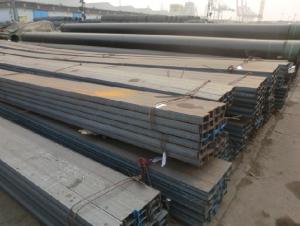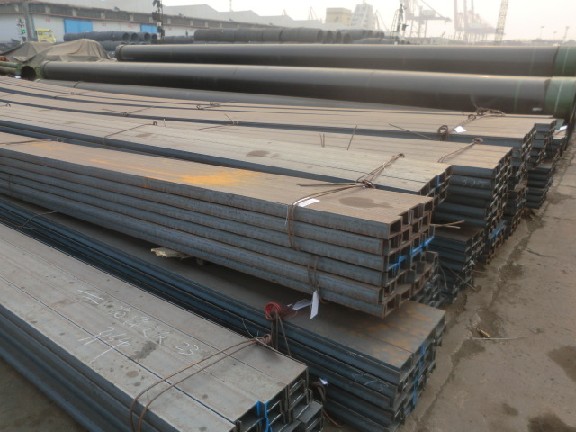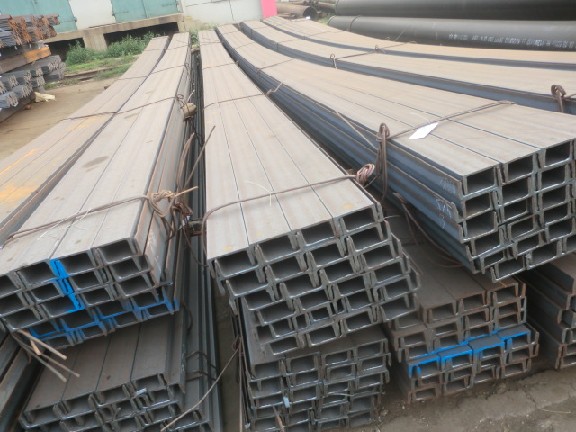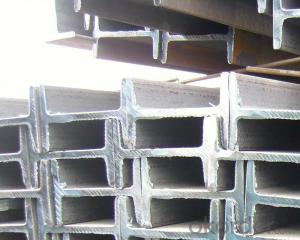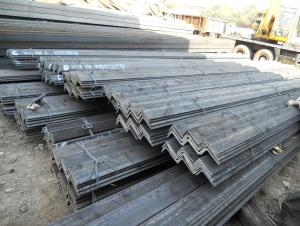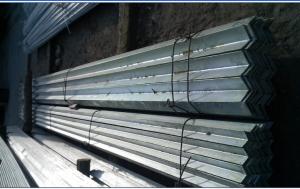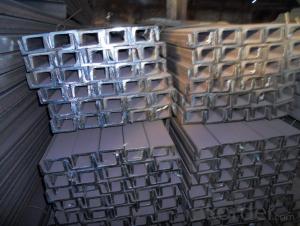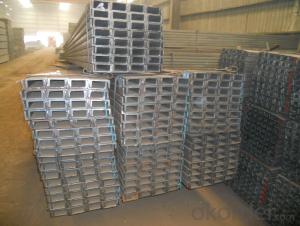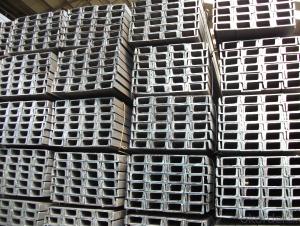HR Steel U Channels Made in China with High Quality and Competitive Prices
- Loading Port:
- Tianjin
- Payment Terms:
- TT or LC
- Min Order Qty:
- 25 m.t.
- Supply Capability:
- 100000 m.t./month
OKorder Service Pledge
OKorder Financial Service
You Might Also Like
Product Description:
OKorder is offering HR Steel U Channels Made in China with High Quality and Competitive Prices at great prices with worldwide shipping. Our supplier is a world-class manufacturer of steel, with our products utilized the world over. OKorder annually supplies products to European, North American and Asian markets. We provide quotations within 24 hours of receiving an inquiry and guarantee competitive prices.
Product Applications:
HR Steel U Channels Made in China with High Quality and Competitive Prices are ideal for structural applications and are widely used in the construction of buildings and bridges, and the manufacturing, petrochemical, and transportation industries.
Product Advantages:
OKorder's HR Steel U Channels Made in China with High Quality and Competitive Prices are durable, strong, and resist corrosion.
Main Product Features:
· Premium quality
· Prompt delivery & seaworthy packing (30 days after receiving deposit)
· Corrosion resistance
· Can be recycled and reused
· Mill test certification
· Professional Service
· Competitive pricing
Packaging & Delivery:
Packaging Detail: products are packed in bundle and then shipped by container or bulk vessel, deformed bar is usually naked strapping delivery, when storing, please pay attention to moisture proof. The performance of rust will produce adverse effect.
Each bundle weight: 2-3MT, or as required
Payment term: TT or L/C
Delivery Detail: within 45 days after received advanced payment or LC.
Label: to be specified by customer, generally, each bundle has 1-2 labels
Trade terms: FOB, CFR, CIF
FAQ:
Q1: Why buy Materials & Equipment from OKorder.com?
A1: All products offered byOKorder.com are carefully selected from China's most reliable manufacturing enterprises. Through its ISO certifications, OKorder.com adheres to the highest standards and a commitment to supply chain safety and customer satisfaction.
Q2: How do we guarantee the quality of our products?
A2: We have established an advanced quality management system which conducts strict quality tests at every step, from raw materials to the final product. At the same time, we provide extensive follow-up service assurances as required.
Q3: How soon can we receive the product after purchase?
A3: Within three days of placing an order, we will begin production. The specific shipping date is dependent upon international and government factors, but is typically 7 to 10 workdays.
Images:

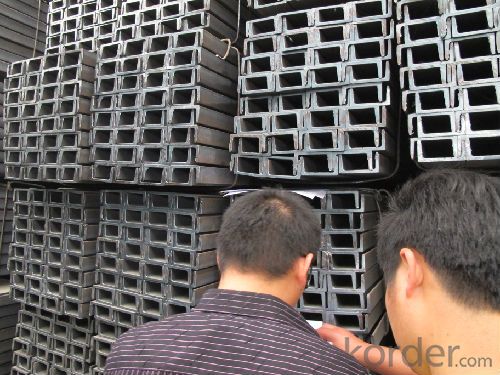
- Q: How do steel I-beams compare to concrete beams in terms of strength?
- Steel I-beams are generally stronger than concrete beams. Steel has a higher tensile strength, meaning it can withstand greater pulling or stretching forces, while concrete has a higher compressive strength, making it better at withstanding pushing or squeezing forces. However, steel I-beams are often preferred in structural applications due to their superior overall strength and ability to span longer distances without the need for additional support.
- Q: Are there any fire safety considerations when using steel I-beams?
- Yes, there are fire safety considerations when using steel I-beams. Steel is a non-combustible material; however, it loses its strength and structural integrity when exposed to high temperatures. Therefore, it is important to ensure proper fire protection measures such as fire-resistant coatings, fireproof insulation, and the installation of fire sprinkler systems to prevent the steel beams from weakening or collapsing during a fire.
- Q: Can steel I-beams be used in coastal areas with high levels of salt exposure?
- Yes, steel I-beams can be used in coastal areas with high levels of salt exposure, but it is important to take certain precautions to ensure their durability and longevity. Salt exposure can accelerate the corrosion process of steel, leading to rust and deterioration. However, by using corrosion-resistant coatings or materials such as galvanized steel or stainless steel, the I-beams can withstand the harsh coastal environment. Additionally, regular maintenance and inspections are crucial to identify any signs of corrosion early on and take appropriate measures to prevent further damage. Proper drainage systems and protective coatings can also be applied to minimize saltwater contact and mitigate the effects of salt exposure. Overall, with proper precautions and maintenance, steel I-beams can be effectively used in coastal areas with high salt exposure.
- Q: Can steel I-beams be used in the construction of stadiums and arenas?
- Yes, steel I-beams are commonly used in the construction of stadiums and arenas. They provide structural support, allowing for large open spaces and long spans without the need for many columns. The high strength-to-weight ratio of steel I-beams makes them ideal for supporting heavy loads and withstanding the forces exerted by large crowds.
- Q: Can steel I-beams be used in the construction of schools and educational facilities?
- Yes, steel I-beams can certainly be used in the construction of schools and educational facilities. Steel I-beams provide numerous advantages in construction, making them a popular choice for many types of buildings, including schools. Firstly, steel I-beams are known for their strength and durability. They have a high load-bearing capacity, allowing for the creation of large open spaces without the need for excessive supporting columns or walls. This is particularly beneficial in educational facilities, as it allows for flexible and adaptable spaces that can be easily reconfigured to meet changing needs and accommodate various activities. Additionally, steel I-beams are fire-resistant, which is crucial in ensuring the safety of students and staff. Steel does not burn, melt, or contribute to the spread of fires, making it an excellent choice for schools where fire safety is a top priority. Moreover, steel is a sustainable and environmentally-friendly material. It can be recycled and reused, reducing waste and minimizing the carbon footprint of the construction process. This aligns with the growing emphasis on sustainability in educational facilities. Furthermore, steel I-beams are cost-effective in the long run. While the initial investment in steel construction may be higher than other materials, the durability and low maintenance requirements of steel make it a cost-efficient choice over its lifespan. This is particularly advantageous for schools with limited budgets, as it reduces the need for frequent repairs and replacements. Lastly, steel I-beams provide design flexibility, allowing architects and designers to create modern and visually appealing educational facilities. The sleek and slender profile of the I-beams can be incorporated into various architectural styles, providing a contemporary and aesthetically pleasing look to the building. In conclusion, steel I-beams are a suitable and advantageous choice for the construction of schools and educational facilities. Their strength, fire-resistant properties, sustainability, cost-effectiveness, and design flexibility make them an ideal material for creating safe, functional, and visually appealing learning environments.
- Q: How do you calculate the shear deflection in a steel I-beam?
- To calculate the shear deflection in a steel I-beam, the first step is to determine the maximum shear stress at any point along the beam's cross-section. This can be done using the formula for shear stress, which is equal to the shear force divided by the area over which the force is applied. Once the maximum shear stress is determined, it is necessary to find the shear modulus or modulus of rigidity of the material. This is a material property that relates shear stress to shear strain. Finally, the shear deflection can be calculated using the formula for shear deflection, which states that the deflection is equal to the shear force multiplied by the beam length cubed, divided by the product of the shear modulus and the moment of inertia of the beam's cross-section. It is important to note that this calculation assumes linear elastic behavior and neglects any geometric imperfections or non-uniformities in the beam. For more accurate results, finite element analysis or experimental testing may be required.
- Q: Are steel I-beams suitable for offshore or marine platforms?
- Offshore or marine platforms often utilize steel I-beams because of their exceptional strength and durability. The unique structural properties of I-beams efficiently support heavy loads and endure the harsh environmental conditions found in these settings. A significant advantage of steel I-beams lies in their high tensile strength, enabling them to withstand extreme forces and loads. This proves crucial in supporting heavy equipment, machinery, and structures on offshore or marine platforms. The design of I-beams evenly distributes the load along their length, maximizing their load-bearing capacity. Moreover, steel I-beams exhibit exceptional resistance to corrosion, a critical feature in marine environments where exposure to saltwater and moisture is constant. Coatings or galvanization are typically applied to the beams to prevent rust and corrosion, ensuring their longevity and structural integrity over time. Additionally, steel I-beams offer the advantage of being relatively lightweight compared to other materials, facilitating easier transportation and installation on offshore or marine platforms. Their versatility enables customization to meet specific project requirements, guaranteeing optimal performance and safety. In conclusion, steel I-beams are highly suitable for offshore or marine platforms due to their strength, durability, corrosion resistance, and adaptability. They provide a reliable and cost-effective solution for supporting heavy loads and withstanding the challenging conditions encountered in these environments.
- Q: Can steel I-beams be used in healthcare or hospital renovation projects?
- Yes, steel I-beams can be used in healthcare or hospital renovation projects. Steel I-beams have several advantages that make them suitable for such projects. Firstly, steel is a strong and durable material that can withstand heavy loads, making it ideal for supporting the weight of floors, walls, and ceilings in healthcare facilities. Secondly, steel I-beams are fire-resistant, which is crucial in hospitals where safety is of utmost importance. Additionally, steel is resistant to pests, such as termites, which can be a concern in older buildings. Moreover, steel I-beams can be easily fabricated and customized to fit specific project requirements, allowing for flexibility in design. Lastly, steel is a sustainable and environmentally friendly material, as it can be recycled and reused, reducing the project's carbon footprint. Overall, steel I-beams provide a reliable and efficient solution for healthcare or hospital renovation projects.
- Q: Can steel I-beams be used for both residential and commercial construction?
- Yes, steel I-beams can be used for both residential and commercial construction. Steel I-beams are known for their strength and durability, making them suitable for a wide range of construction applications. In residential construction, steel I-beams are commonly used for supporting load-bearing walls, floors, and roofs. They are also frequently used in commercial construction for large-scale structures such as warehouses, factories, and high-rise buildings. The versatility of steel I-beams allows architects and engineers to design and construct buildings of various sizes and types, making them a popular choice in both residential and commercial projects.
- Q: Can steel I-beams be used in sports arenas or stadiums?
- Yes, steel I-beams can be used in sports arenas or stadiums. In fact, they are commonly used in the construction of these large structures due to their strength, durability, and versatility. Steel I-beams provide excellent load-bearing capabilities, allowing them to support heavy loads and withstand the forces generated during sporting events, such as vibrations, impacts, and dynamic loads. The use of steel I-beams in sports arenas and stadiums ensures the structural integrity of the facility, providing a safe environment for spectators and athletes. Additionally, the versatility of steel I-beams allows for flexible design options and efficient construction, making them a popular choice in the industry.
Send your message to us
HR Steel U Channels Made in China with High Quality and Competitive Prices
- Loading Port:
- Tianjin
- Payment Terms:
- TT or LC
- Min Order Qty:
- 25 m.t.
- Supply Capability:
- 100000 m.t./month
OKorder Service Pledge
OKorder Financial Service
Similar products
Hot products
Hot Searches
Related keywords
